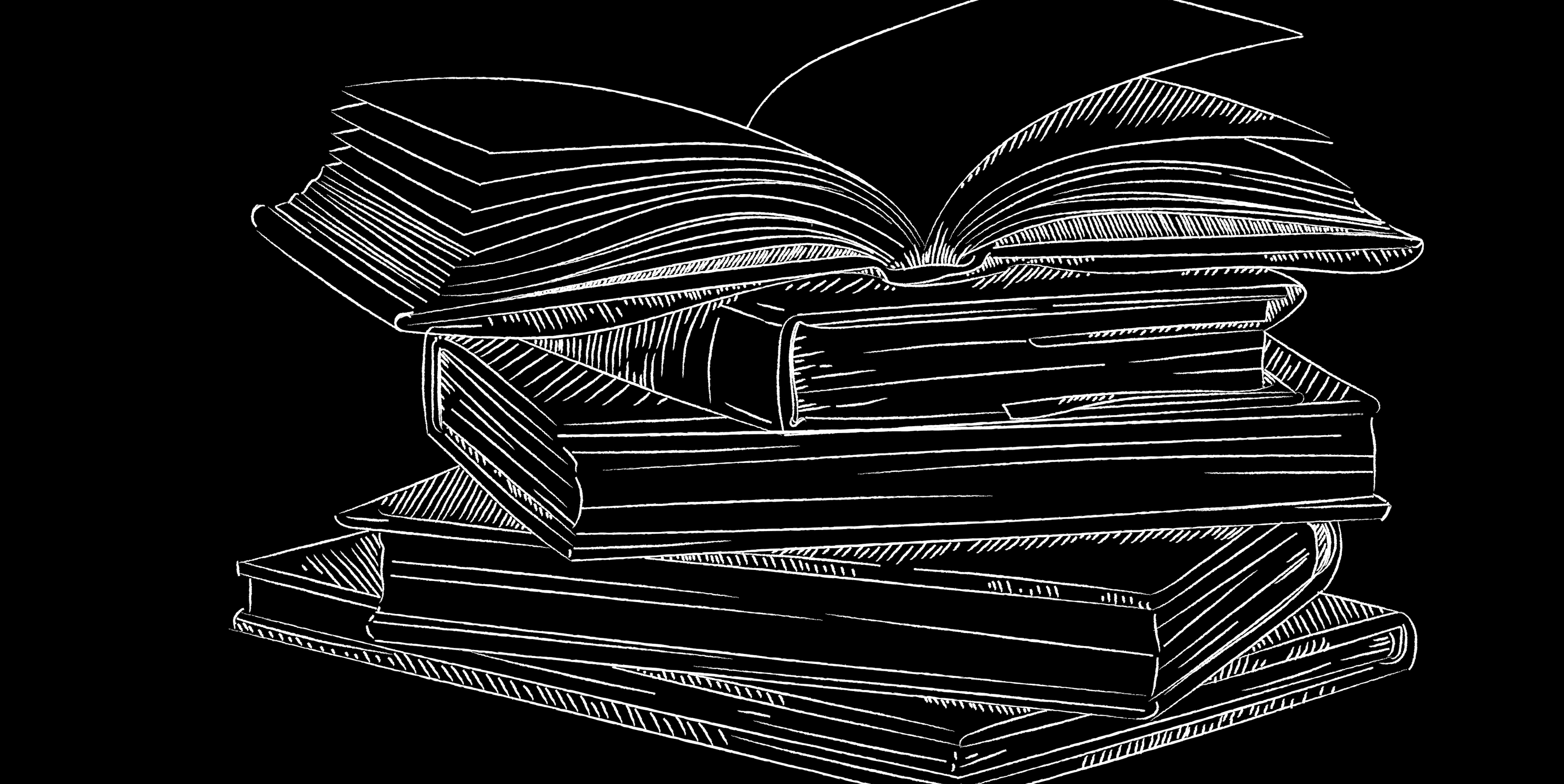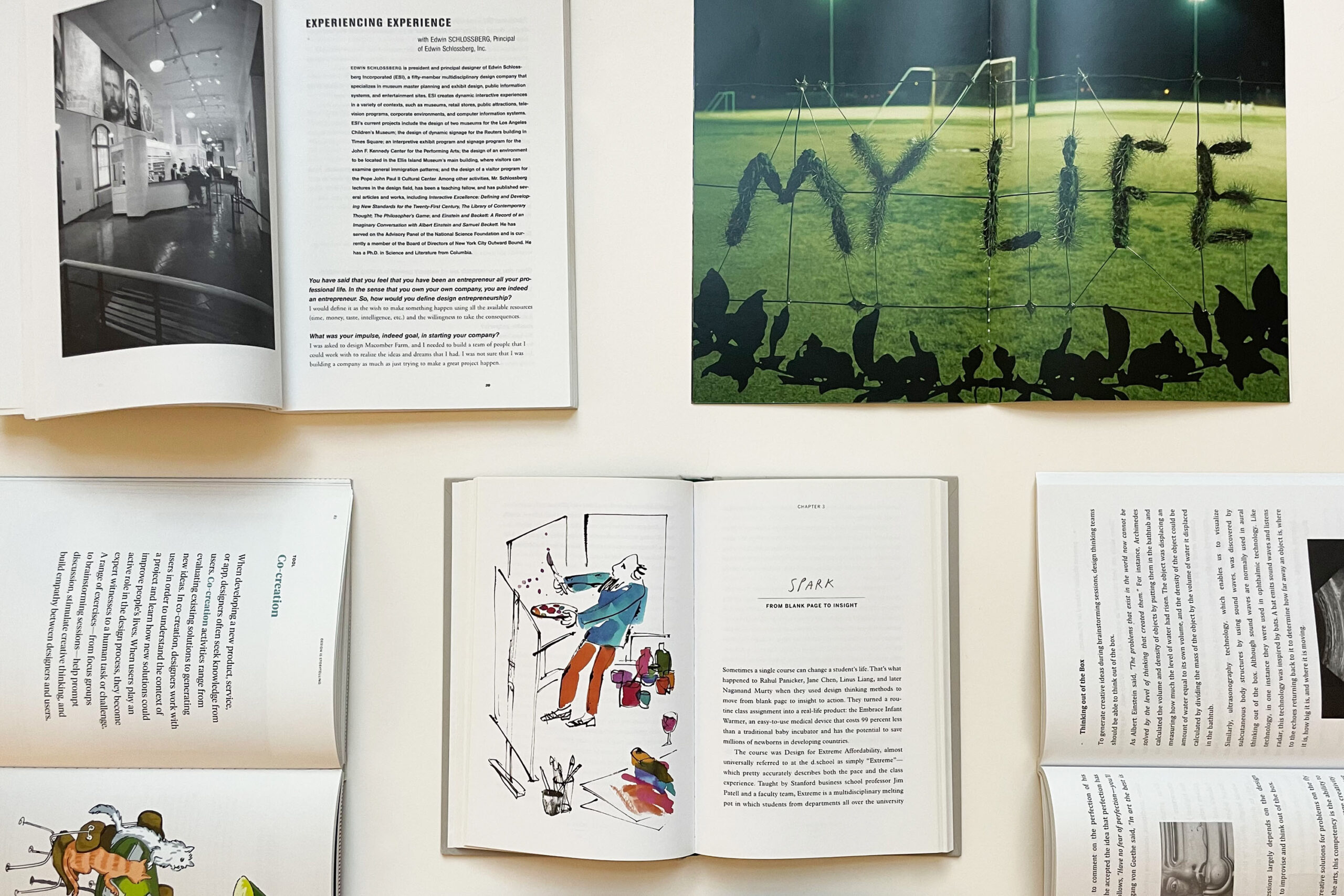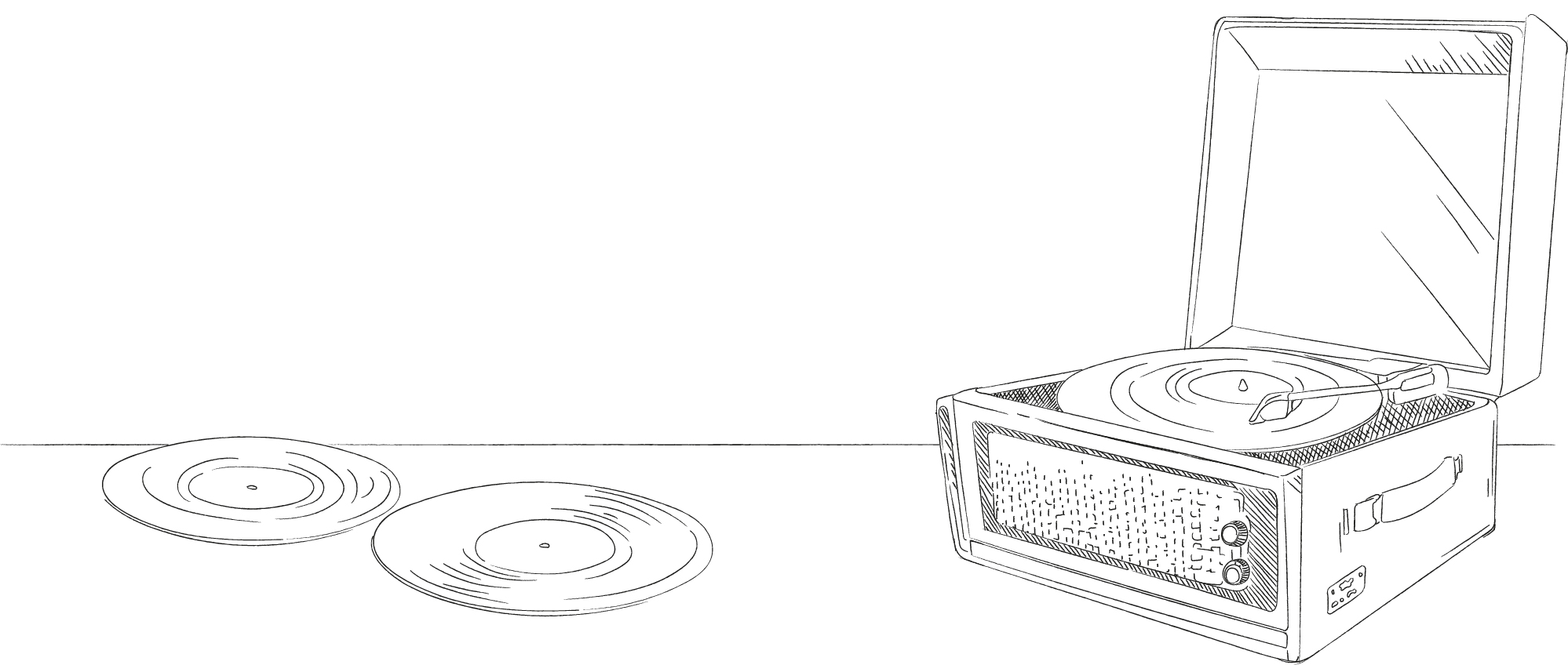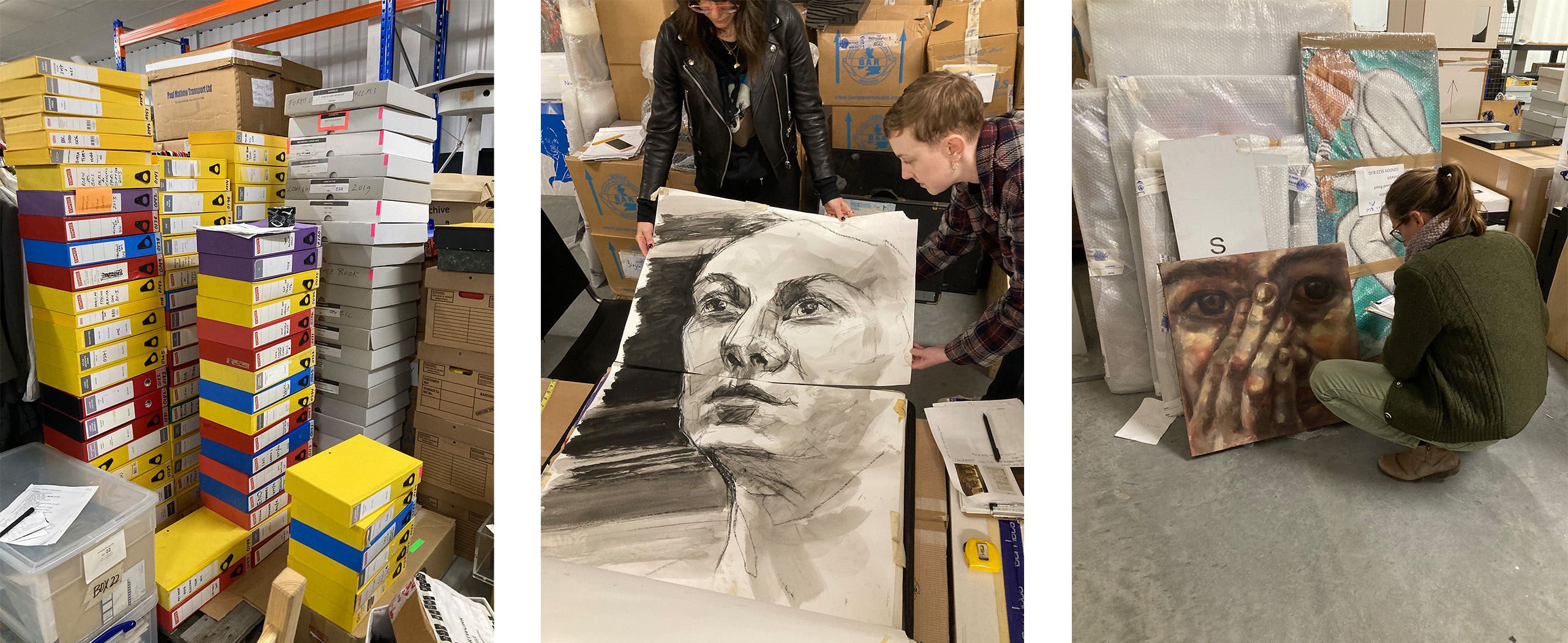DECEMBER: A CREATIVE LIFE

Devlin’s creative life began in childhood. Like many of us, she made things to entertain herself. She built dioramas and staged plays with her siblings, holding candy wrappers against a projector’s light in order to wash the room in different colors. She both studied and created art. An avid reader, she loved to mark in her books. She also learned to play the piano, violin, and clarinet. During visits to museums, she explored exhibitions that introduced her to new types of sculpture and installation, some of which inspired her artwork for many years to come. Over 30 years, she’s expanded and adapted her craft while nurturing a thriving studio space.
While Devlin models one version of an artistic life, all of us make creative choices every day. Our favorite movies, meals, books, and music reflect how we see ourselves and the world around us. Even the ways we build relationships and share experiences reflect our creativity. Connecting with our creativity sometimes requires us to change our routines in order to open new space for reflection or action. The prompts, exercises, and programs on this page provide some ways to spark and develop creative thinking.
Table of Contents
- Prompts: Quick writing or visual exercises
- Exercises: Activities that might ask you to spend a little more time
- Related Reading: Excerpt from An Atlas of Es Devlin
- Programs: Exhibition tours, lectures, and hands-on workshops for visitors at all age and experience levels

PROMPTS
The prompts below are quick writing or visual exercises. The only materials you need are a pencil and a piece of paper, but feel free to play with any other supplies you may have on hand. Try a prompt for five minutes, or stay with it for half an hour. For a challenge, set a timer, mute your notifications, and see where your thoughts travel. Keep your pencil moving, even when you’re stuck! Don’t worry about creating something polished or perfect—this is a place to experiment. To twist a prompt, try drawing instead of writing or writing instead of drawing.
DRAWING PROMPTS
1. Visualizing Creativity
Try to picture what creativity looks like in your life. Do you adapt a recipe as you cook dinner? Or make up new lyrics to favorite songs? Maybe you’re creative in many different ways? Draw a visual representation of what your creative process looks like. Consider the spaces, tools, collaborators, and activities that contribute to your creativity. Try using colors, symbols, and/or shapes to convey the energy and essence of how you embody creativity.
2. Inspiration Collage
Craft a collage or make a drawing that reflects the diverse sources of inspiration in your life, such as books, quotes, movies, music, and imagery that resonate with you. Collect images, textures, and words that represent the varied influences on your creativity. Arrange them in a sequence that tells a story about your creative inspiration.
3. Mental Studio Space
Even if you don’t have a space at home, work, or school dedicated to creative projects, imagine what your ideal studio might look like. Think about how this environment could support and nurture your creativity. Add favorite objects that encourage play and comfort. Pay attention to the details that support your artistic expression.
4. Blueprint for Future Creativity
Design a visual “blueprint” that represents the vision for how you might hope to expand your creative life. What new activities or practices might you want to incorporate into your day, week, or month? Use symbols, arrows, and colors to map out strategies, habits, and rituals that contribute to maintaining creative stamina and achieving your goals.
WRITING PROMPTS
1. A Day of Creative Practice
Describe a typical day in your life, focusing on the moments where you feel most creative. Walk through the routines and rituals that spark creativity. Try to describe the sights, sounds, and emotions characterizing a nurturing, creative day.
2. Sources of Inspiration
What inspires you to engage in acts of creativity? Think about a moment when you felt creative. Consider where you were, who you were with, what you were doing, and what question you were exploring. Write about specific experiences, people, places, or art forms that inspire and motivate you. How might these influences contribute to your unique voice and point of view?
3. Navigating Artist’s Block
It’s natural to feel stuck sometimes. Getting unstuck is an essential part of the artistic process. Think about a time or period in your life where you didn’t feel creative or inspired. How did it feel? What was going on? If you were able to come back to your creative practice, what helped you break through your block? Share the strategies, mindset shifts, or activities that helped. What lessons might you take away from this experience?
4. Sustainable Growth
Think about how your creativity has grown or changed over the course of your life. If you’re new to a creative practice, brainstorm some goals for making it sustainable alongside the other demands of your life. How much time can you give to a creative practice? Where can you find the time in your day, week, or month? Describe the specific strategies, challenges, and moments that have contributed or might contribute to your personal creative development. What advice might you give to someone else starting their own creative journey?

EXERCISES
Exercises are activities that might ask you to spend a little more time or to gather and play with some additional materials.
Book portraits
Self-portraiture allows us to study our faces, bodies, and minds as they change. But a portrait doesn’t need to be a literal depiction. For this exercise, try making a self-portrait based on books that represent you. The books might capture important topics or stories, their covers might create a visual of yourself, or you might stack or arrange the books in a creative way. Try to pull these books from your shelves, borrow them from a library, or even arrange images of their covers on a mood board. What books say the most about who you are?
To enrich your portrait, feel free to incorporate objects other than books! Perhaps you want to include movies or music, too. You might even pull clothes from your closet or objects from your home that are important to you. Arrange them in a group and consider them together. Snap an overall photo.
What story emerges? Are there any common threads? Are there any lines from books, movies, or songs that stand out to you? Jot these down and consider how they might spark further questions to explore. For an added twist, try making a book portrait of someone you know or of a character in a novel or film. Think about how this person might represent themselves to others as well as how they might see themselves when they’re alone.
In the example below, Smithsonian’s Design Library staff made a book portrait based on kickstarting a creative practice. Their descriptions of the books they chose and their advice on how to read them serve as a creative reading list. Feel free to explore these or other Smithsonian Library titles.


Design Thinking Methodology Book, Emrah Yayici
“Design Thinking” describes how successful companies have applied creative methods to refine their workflow, identify problems, and produce innovative solutions. The book is also useful as a model: it demonstrates how creativity, empathy, and insight can be applied to fields that are generally not considered design.
Notes on reading: A short read! Skim sections that are less relevant to you and let yourself linger on the areas that capture your attention. Familiarize yourself with the contents so you can return for future reference.
Education of a Design Entrepreneur, edited by Steven Heller
A collection of 50 interviews and essays that address the practical work of running a design business. This book combines helpful advice about professional practices with affirming anecdotes about growth through difficult times.
Notes on reading: Skip around and read the sections that interest you.
Creative Confidence: Unleashing the Creative Potential Within Us All, Tom Kelley and David Kelley
From the founder of human-centered design and consulting firm, IDEO, and the author of The Art of Innovation, brothers and business partners Tom and David Kelley present a collection of strategies to cultivate creativity in yourself. This book emphasizes harnessing “the creative spark in all of us” by helping readers overcome their fears of failure.
Notes on reading: Makes great subway reading. Read a chapter here and there, then give yourself time to digest and figure out how key ideas can apply to your life.
Design is Storytelling, Ellen Lupton
This Cooper Hewitt publication is based on the idea that design shares many goals with crafting a narrative, from communicating expectations to building suspense. More than half the pages feature effective graphics and charming illustrations that demonstrate the design principles discussed.
Notes on reading: Engaging with lots of pictures. Sit down and read this book from cover to cover.
Things I have learned in my life so far, Stefan Sagmeister; essays by Steven Heller, Daniel Nettle, and Nancy Spector.
Graphic designer and typographer Stefan Sagmeister, known for his album covers and innovative book designs, shares kernels of wisdom in 15 engaging zine-sized booklets containing short, thematic essays.
Notes on reading: Get swept away! Spread out on a table and let yourself take this book in as an experience.

RELATED READING
AN INFINITE ARCHIVE
Andrea Lipps and Julie Pastor
There’s a level at which words are spirit and paper is skin. That’s the fascination of archives. There’s still a bodily trace.
Susan Howe, The Telepathy of Archives
To visit Es Devlin’s archive is to experience a kind of magic. Housed in an unassuming storage space in rural Kent, the relics of her 28-year practice form a skyline of towering boxes and bins stuffed with drawings, scale models, sketchbooks, photographs, notes, and books. Against a wall, paintings lean like dominoes in rows twenty canvases deep.
Opening a box invites constant surprise. The sketchbooks are like sculptures, their pages collaged with gauzy fabrics, painted metal, colorful glass and miniature cogs. Models present jewel-like visions of designs for theater, opera, stadium tours and immersive installations –among them delicate trees, mirrored mazes and a bloodied bathtub no bigger than a fingernail. Personal photo albums record her first travels abroad with the considered eye of someone memorizing a place rather than documenting it, with photographs arranged in bands of color, texture and light.
But it’s through her drawings that one most closely approaches her thoughts, whether through meditative portraits and studies or urgent concepts rushed across sheets of music, scraps of newspaper, printed emails and set lists, or in the margins of scripts. She returns again and again to faces, figures and hands, layering materials and paint to suggest more under the surface. Bodies are confined and contorted into tiny boxes. Faces burst beyond the edge of the canvas. The content, dynamism and materiality are overflowing, suggesting a boundless creative mind.
It is impossible to pin Es Devlin to a singular title, and perhaps it is defeating. She is polymathic. She is a storyteller, an artist, a designer, a director, a poet, a visionary, perhaps even a shaman, whose work razes through disciplinary boundaries. Her canvas is temporary space, her materials are as intangible as her work is ephemeral: breath, light, music, time, and anticipation. Her additive practice reveals a limitless curiosity. To be in her presence is to be transfixed with creative energy, poetry and a proliferation of ideas. She poses incisive questions of collaborators and immerses herself within texts. The result is the precise distillation of narrative in form: a merging of geometry, materials and words into an armature that holds the ritual of performance. And yet, as she points out, ‘I do all this work and nothing physical remains. What I’m really designing are mental structures, as opposed to physical ones. Memories are solid, and that’s what I’m trying to build.’
Excerpt from Andrea Lipps, “An Infinite Archive,” in An Atlas of Es Devlin, ed. Andrea Lipps (London: Thames & Hudson and New York: Cooper Hewitt, Smithsonian Design Museum, 2023).

PROGRAMS
Cooper Hewitt hosts a range of programs—including exhibition tours, lectures, hands-on workshops, and others—for visitors at all age and experience levels. Videos of recorded programs are available here.
Learn more about upcoming programs at Cooper Hewitt.
